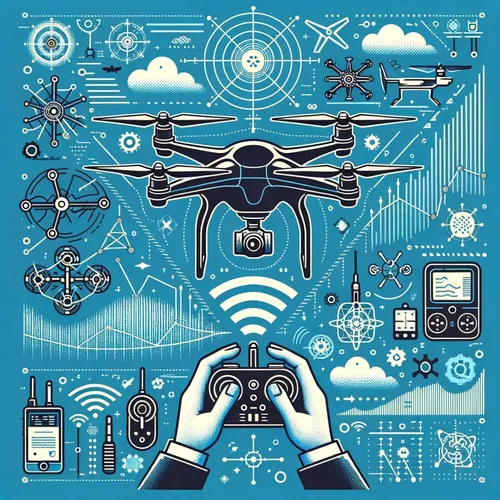Drones Gone Wild: Soaring Profits, Plummeting Costs, and Sizzling Surveillance!
- Author
- Quiet. Please
- Published
- Mon 28 Jul 2025
- Episode Link
- https://www.spreaker.com/episode/drones-gone-wild-soaring-profits-plummeting-costs-and-sizzling-surveillance--67150128
This is you Commercial Drone Tech: Enterprise UAV Solutions podcast.
Enterprise drone technology is rapidly transforming key industries by providing unprecedented access to real-time data and enhanced workflow automation. Today, commercial drones are being deployed far beyond traditional aerial photography. In the construction sector, they conduct high-resolution site surveys, generate precise 3D models, and monitor project progress, leading to more efficient scheduling and reduction in rework. Farmers increasingly use drone-borne sensors for crop health assessment and precision spraying, which can increase yield while cutting fertilizer and water use. In the energy industry, drones inspect wind turbines and power lines, enabling faster fault detection and minimizing downtime, while infrastructure companies leverage unmanned aerial vehicles to assess bridges, rail networks, and pipelines quickly and safely.
Companies are achieving strong returns on investment by shifting inspection and survey work to drones. For example, recent case studies show that wind farm inspections that once took several days and required expensive scaffolding or cranes can now be completed in hours with drones, often resulting in cost savings above 50 percent compared to traditional methods. McKinsey has reported that the global commercial drone market could top 40 billion dollars by 2027, reflecting a surge in enterprise adoption.
Fleet management platforms such as Aloft’s Air Control and DJI’s FlightHub provide secure, centralized oversight of large drone fleets, offering features like live mission tracking, automated flight log management, regulatory compliance reporting, and integration with core business systems through APIs. This ecosystem supports seamless data handoff between operations and enterprise resource planning or asset management software, helping organizations maximize their returns. Drone management software platforms like FlytBase and Dronelink also enable routine scheduling of preventative maintenance, ensuring components are serviced before failures occur—a critical safety and operational concern, especially for large enterprise operators.
Security and regulatory compliance are top of mind. Industry-leading platforms are now SOC two and ISO 27001 certified and support evolving requirements including Remote Identification and FAA waivers, while also securing data end-to-end from drone hardware through the cloud. Furthermore, training and change management are essential: organizations succeeding with drones invest in specialized pilot training, ongoing certification, and clear standard operating procedures.
In current news, several utilities in the United States have announced large-scale drone deployments for wildfire monitoring and grid inspection this quarter, while a major construction conglomerate in Europe has tripled its investment in automated progress tracking using drone swarms. Meanwhile, regulatory bodies in Asia have accelerated approvals for beyond visual line of sight drone corridors, indicating a future where unmanned aerial vehicles operate at larger scale and across new commercial domains.
Looking ahead, drone autonomy, integrated AI analytics, and cross-platform interoperability are positioned to drive the next wave of enterprise value. Listeners contemplating enterprise adoption should begin with a thorough workflow assessment, invest in robust fleet management software, and prioritize security and compliance from day one. Thank you for tuning in—come back next week for more insights. This has been a Quiet Please production. For more, check out Quiet Please Dot A I.
For more http://www.quietplease.ai
Get the best deals https://amzn.to/3ODvOta
